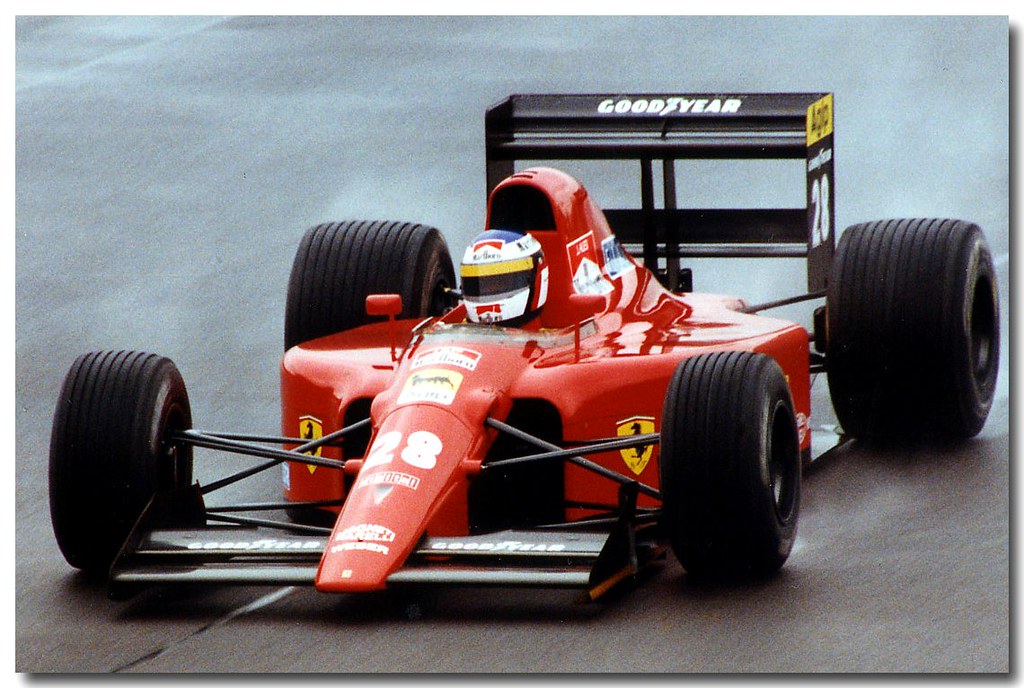The distinct and glorious sound of a V12 engine holds a special place in the hearts of Formula One fans. Its unique firing order produces a mechanical melody that simply cannot be replicated by any other engine configuration. Though a rarity today, V12 engines were once commonplace in the F1 paddock, with a rich history spanning over five decades of racing.
The Early Days of V12 Era
The allure of a V12 for use in Formula One stems from its inherently perfect primary balance, allowing it to run incredibly smoothly at high RPMs. This characteristic led Ferrari to build the first ever F1 V12 engine, a supercharged 1.5 liter unit, for its 125 F1 car which debuted in 1950. Enzo Ferrari quickly realized the benefits of using a larger, naturally aspirated V12 design, and Ferrari has stuck with the V12 layout on and off ever since.
In the early 1950s, Ferrari’s V12 engines dominated the field, powering Ascari to back-to-back titles in 1952 and 1953. Though rule changes in 1954 forced Ferrari to temporarily switch to other engine designs, they returned to the V12 in 1961. The introduction of the Ferrari 156 signaled the resurgence of the V12 era, as this nimble machine took Phil Hill to the 1961 Driver’s Championship.
The Rise of Ford-Cosworth V8 Dominance
Though still a formidable power plant, the complexities of designing, building, and maintaining a V12 led other manufacturers to explore different engine layouts throughout the 60s and early 70s. The Ford-Cosworth DFV V8 emerged as a dominant force during this time, earning 155 wins between 1967 and 1983 while powering 12 Driver’s Championships.
Compared to the V12, Ford’s compact, lightweight, and fuel efficient V8 engines could be easily adapted to suit different chassis, making it an attractive option for many constructors. Coupled with its immense reliability and competitive power output, the DFV represented the pinnacle of F1 engine technology during the late 60s and 70s.
Turbocharged Era
The dawn of the Turbo Era in 1977 threatened to displace normally aspirated engines entirely from Formula One. Turbocharging allowed smaller engines to produce significantly higher power outputs compared to traditional designs. Though Ferrari persisted with its flat-plane V12 turbo initially, even they eventually succumbed to the overwhelming performance advantages of the turbocharged V6 layout.
The Honda RA168E 1.5L V6 stands out as the most dominant turbocharged powerplant of this era, propelling Senna and Prost in the McLaren MP4/4 to 15 wins and 15 pole positions throughout the 1988 season. Though extreme horsepower figures were achieved during this time, topping out around 1,400 hp in qualifying trim, these engines lacked long term reliability at such extreme outputs.
Return of Normally Aspirated V12s
With turbos banned starting in 1989, engine formulas returned to normally aspirated designs limited to 3.5L displacement. Seeing an opportunity to return to past glories, Ferrari dusted off its V12 program while Lamborghini and Yamaha also jumped on the V12 bandwagon. The era also saw new unsuccessful attempts by Honda, Porsche, and Subaru to enter F1 with V12 engines.
In the new 3.5L formula, Honda’s RA121E V12 proved the class of the field, generating a reported 780 hp in its highest state of tune. The RA121E powered Senna and Berger to great success in the McLaren MP4/6, earning Senna his final Driver’s Championship in 1991 while also signalling the end of the previous Turbo Era and the start of a new one.
The Final V12 Champion Engine
Rules reducing displacement to 3.0L for 1995 hampered V12 development, but this didn’t stop the relentless Ferrari squad. While other manufacturers quickly moved to more compact V10 layouts, Ferrari pressed on with its iconic V12 design. Though down on power compared to the preceding 3.5L era, their 1995 Tipo 044/1 V12 generated approximately 700 hp while powering the 412T2 car.
This final iteration of Ferrari’s F1 V12 secured a sole victory in Canada 1995 courtesy of Jean Alesi. Though clearly uncompetitive against the dominant Williams and Benetton cars of the era, the 412T2 demonstrated the incredible development lifespan of Ferrari’s V12 Formula 1 engines.

Final FIA V12 Engines Ban
Despite a valiant effort by Ferrari to keep their beloved V12s competing, the writing was clearly on the wall heading into the 1996 season. F1 engineers had universally agreed that the compact V10 architecture simply offered better packaging and efficiency compared to the larger, heavier V12 layout.
Though never officially banned, the FIA’s mandate that all cars use V10 engines from 2000 onwards effectively spelled the end for V12 powerplants in Formula One. This rule change fittingly drew the curtain closed on a 50 year stretch of V12 racing history indelibly intertwined with Ferrari’s legacy in the sport.
Legacy of F1 V12 Engines
The sheer longevity of competitive V12 use in Formula One remains an incredible technical achievement.having powered championship winning efforts across five decades of dramatic technological changes and rule shifts in F1.
V12s managed to stay relevant from the early pre-war days of supercharged 1.5L engines, through awkward 1.5L normally aspirated formulas, to the extreme horsepower levels seen during the Turbo Era, and finally ending service in the modern age of slick 3.0L normally aspirated powerplants.
This sustained success across such varietal conditions, coupled with their uniquely scintillating sound, cements V12 engines as one of the most iconic powerplants ever used in the pinnacle of motorsports.

